
Organizations are a big part of everyday life and daily demands. Whether it is business-related, faith-based, or interest-based, people form and join different types of organizations for all kinds of reasons.
[bb_toc content=”][/bb_toc]
Organizations Definition & Meaning
An organization is a structured group or body that’s comprised of members and is governed by a set of laws or rules.
In the broadest sense, organizations share a common objective and a shared vision and anyone who belongs to the organization is expected to conduct themselves in a way that’s beneficial to the company.
What Is an Organization?
An organization can vary in size, objective, and nature. To illustrate, small businesses, educational institutions, multinational conglomerates, government agencies, and NGOs are all considered organizations. Organizational documents, on the other hand, are a key requirement for any company or organization that wants to be deemed as legitimate and acceptable.
10 Types of Organization
Nonprofit Organization
Nonprofit organizations are also known as non-government organizations. They can come in the form of civic groups and charitable foundations and can either be international or locally based. Nonprofits make use of all kinds of documents including marketing plans in order to raise funds, donations, and other resources or support to further the organization’s advocacy.
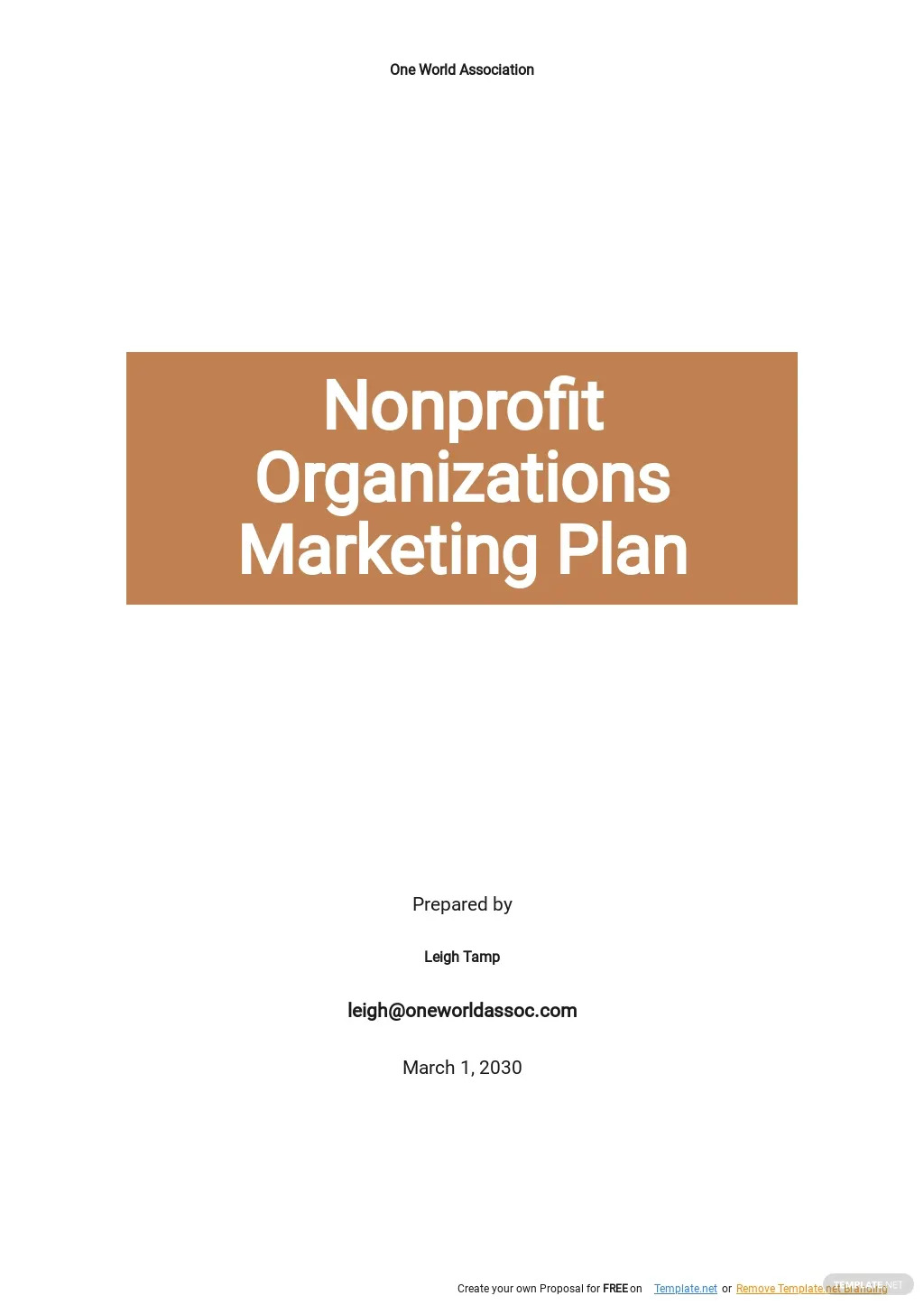
Organizational Key Results Area
An important aspect of organizational culture is performance and productivity. Whether it is the tourism or health sector, the key results area is a mechanism for improvement and organizational development. The key results area or KRA helps organizations and individual members stay focused on their objectives and goals.
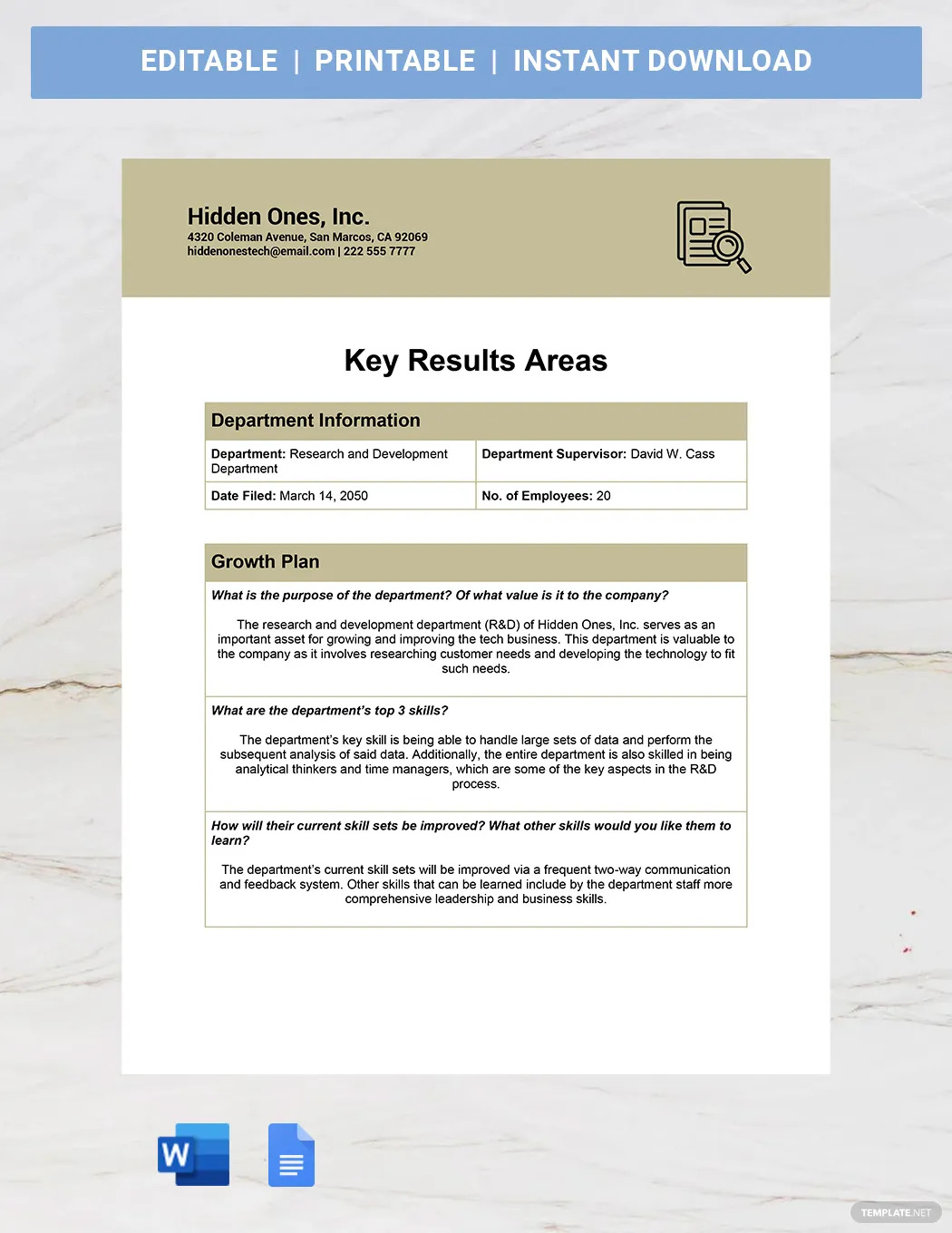
Community and Faith-Based Organizations
A lot of people join organizations or clubs based on shared interests and hobbies. From community faith-based organizations, student-led college organizations to service-oriented groups, it is an inherent human trait to seek a sense of belonging and fellowship with other people. The editable template below is a detailed organizational checklist you can use to ensure your organization’s community and health protocols are in place.
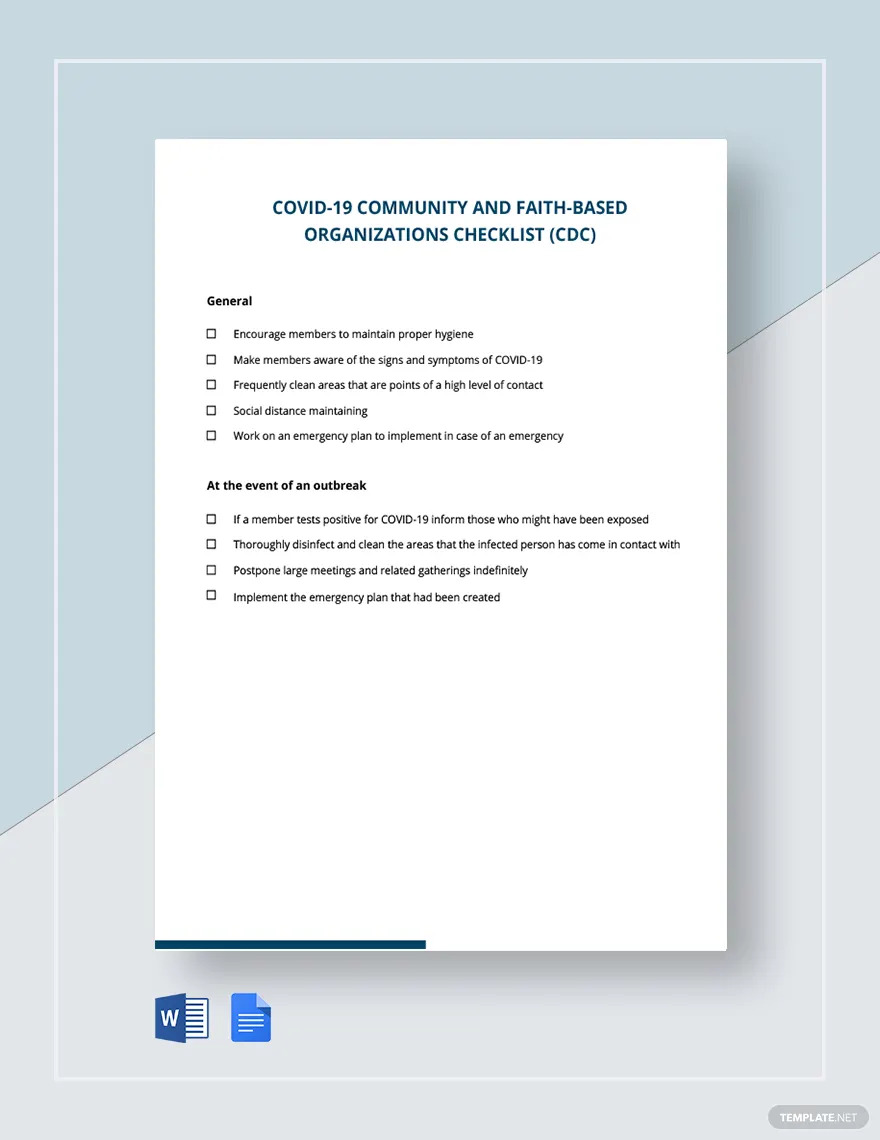
Organization ID Card
Every legitimate company should provide its employees and members with a professional organization ID card. An ID or identification card is not just for formality, it is a mechanism for control and security. Whether it is a government agency, research institute, or art school, every ID card should have a unique number or bar code on it.

Organization-Wide Goals
Each and every organization needs a purpose or a goal to strive towards. There are different goal-planning methods that a company can utilize. The document below is an organization-wide goals template that not only outlines detailed company objectives but also paints a broader picture of the overall direction of the organization.
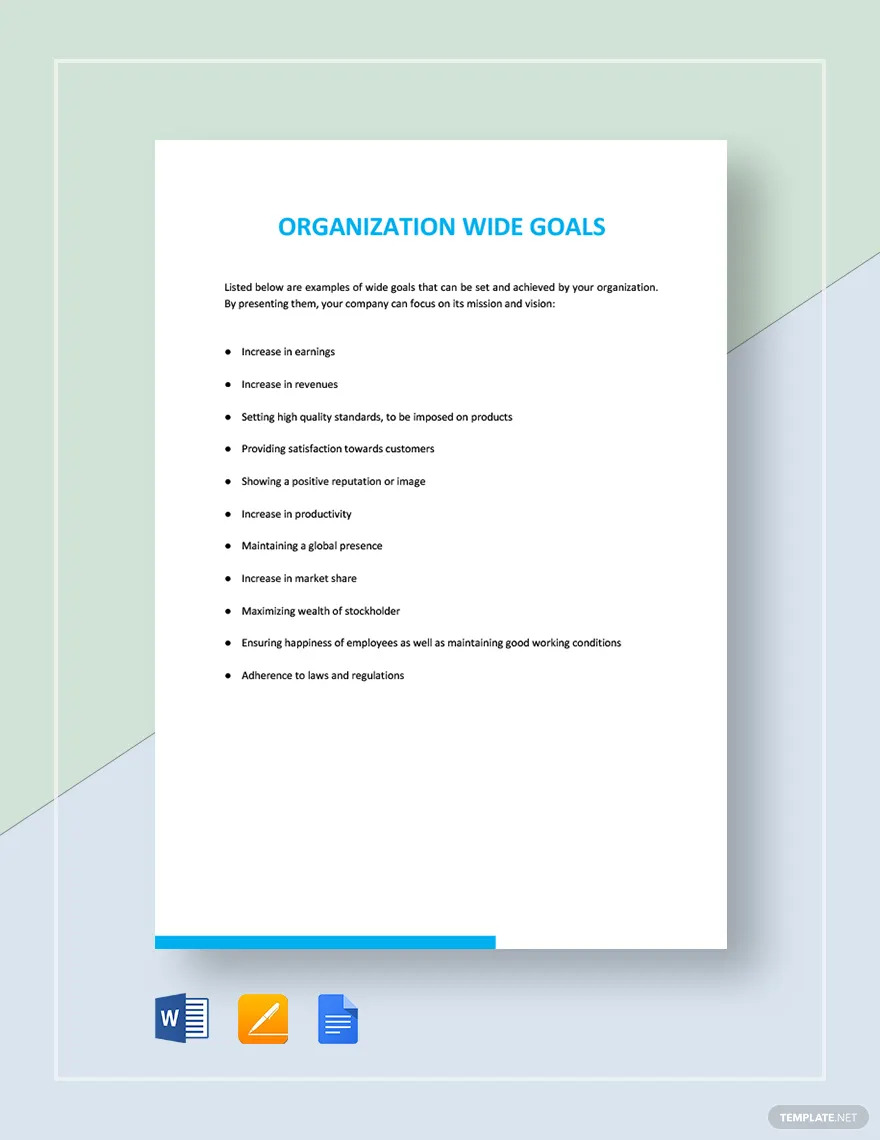
Organization Incorporation Agreement
Whether it is a nonprofit foundation or a private company, one of the basic documents for forming a company is the incorporation agreement. All the principal parties involved need this as a way to establish the incorporated entity. It is essentially a formal and legal document that clearly defines the different responsibilities and arrangements made by the parties involved in the agreement.
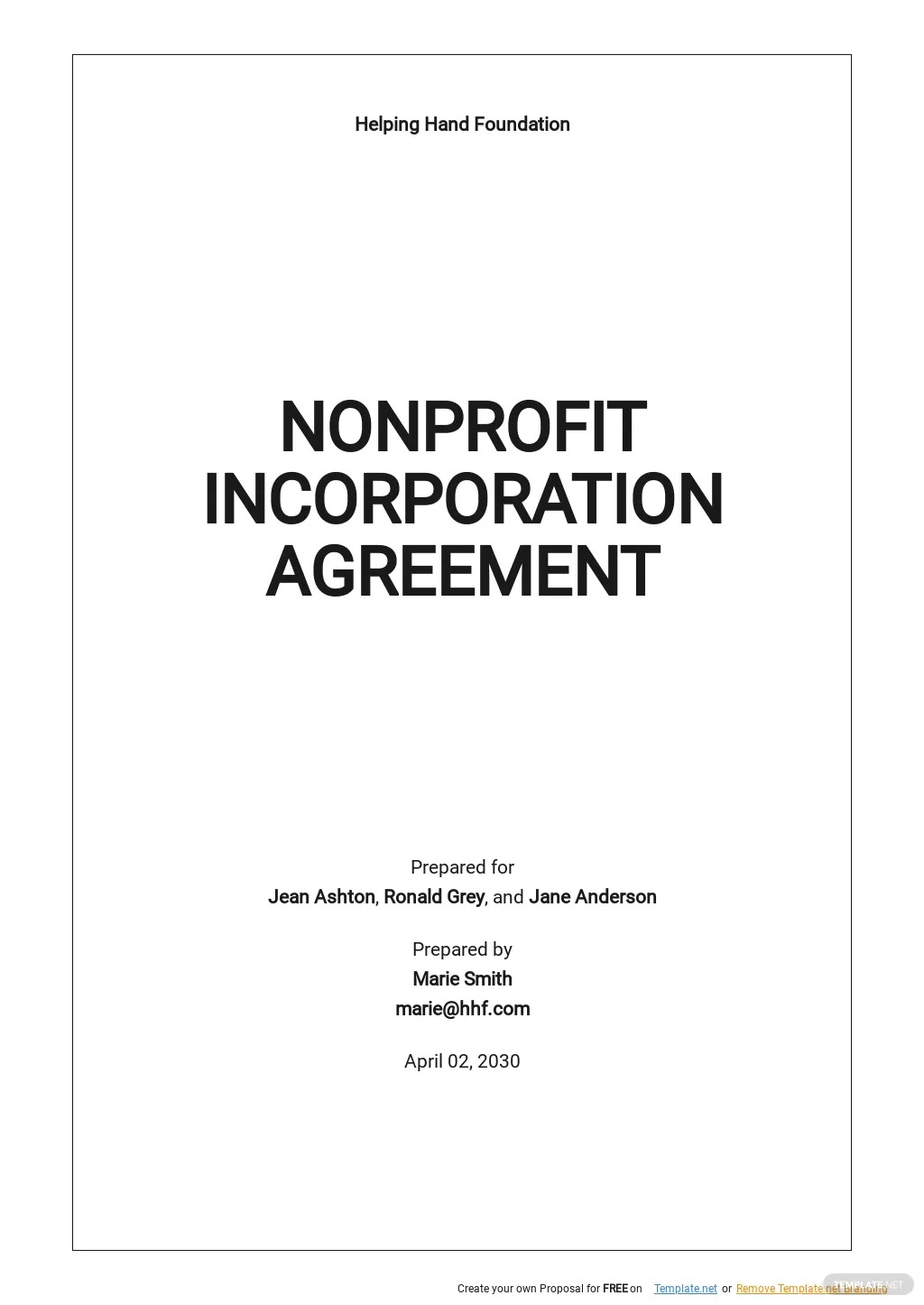
Organization Pre-Incorporation on Designation of Directors
Identifying and appointing a board of directors is standard protocol for incorporated organizations. The sample pre-incorporation on the designation of directors comes with a predesigned format you can use while writing your company’s incorporation agreement. And since it is a legal and complex document, it would obviously take much time and effort to write but with a ready-made template, you can save a lot of time.
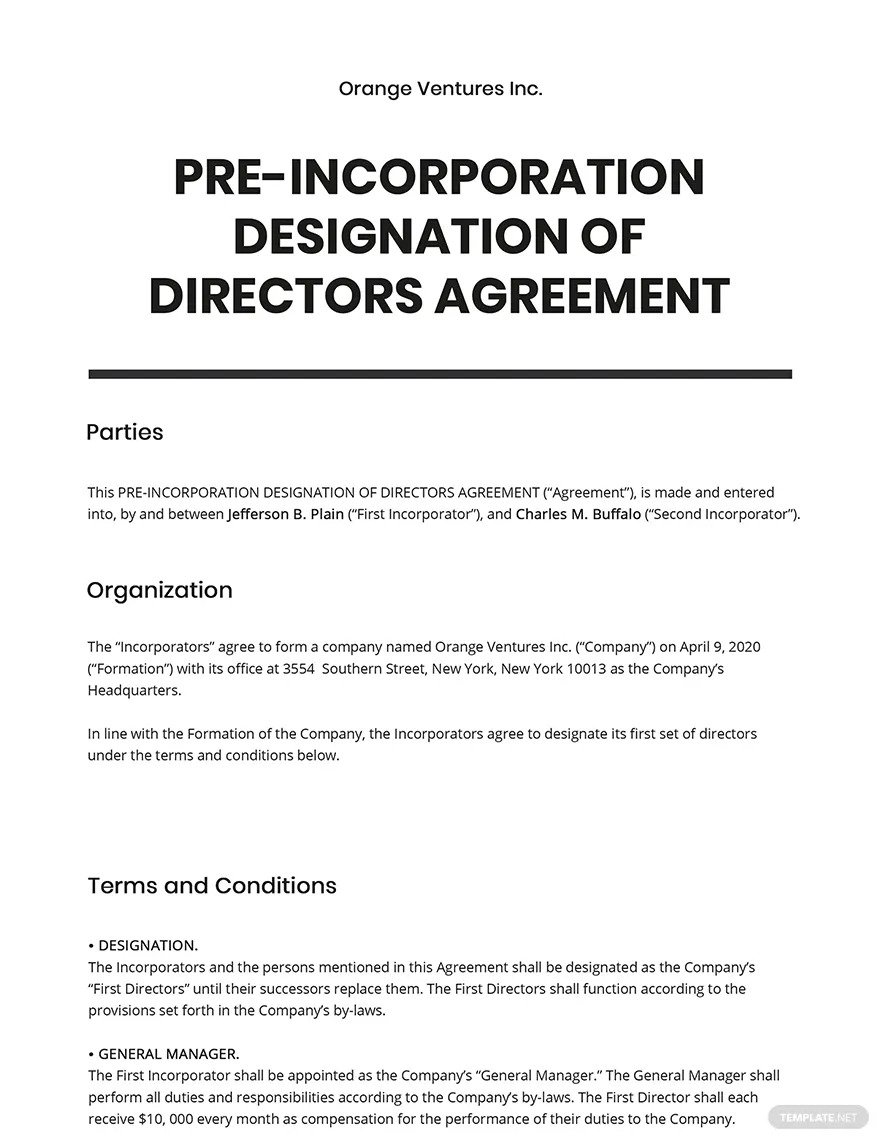
Organization Articles of Incorporation
Along with company bylaws, the organization’s articles of incorporation are a basic requirement for setting up a legitimate company. Writing the different articles and terms is not simple or easy, but using a sample template as a reference guide can help you get the job done faster. Don’t forget to include your organization or company logo on the title page, as seen in the illustration below.
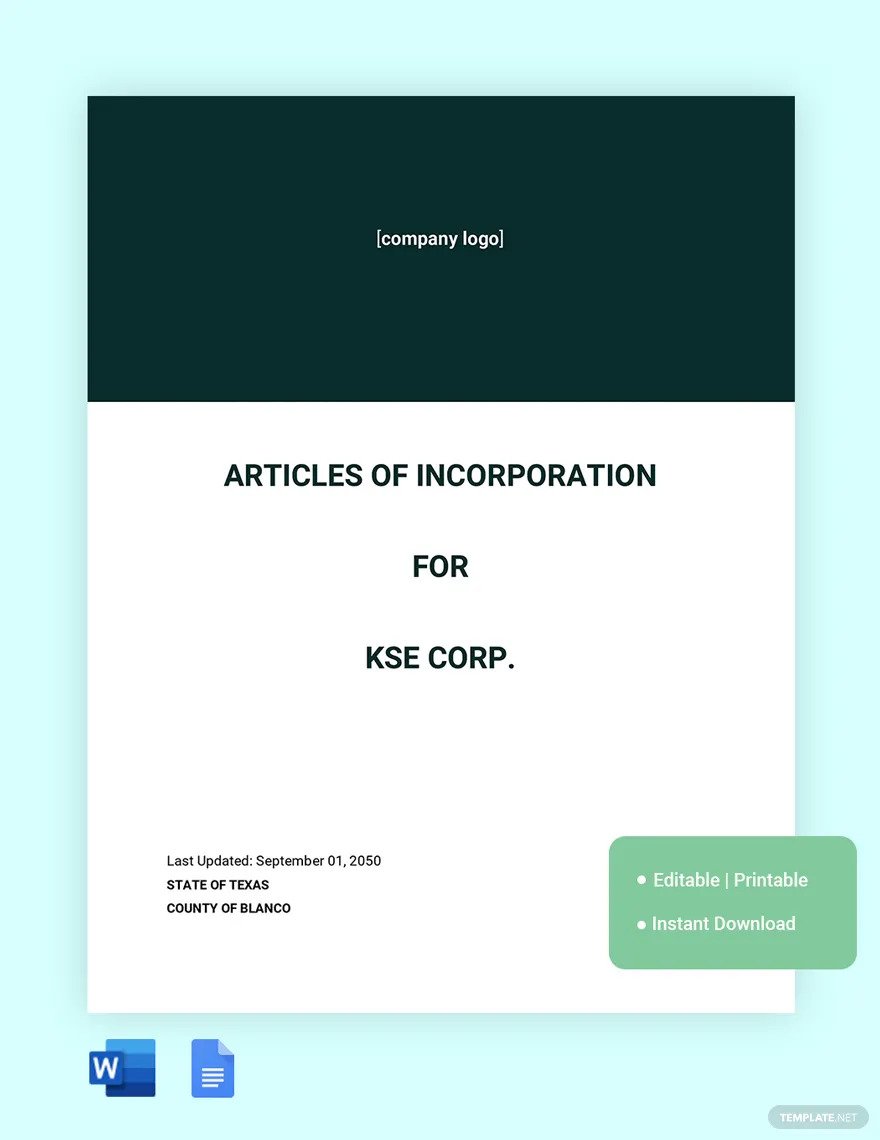
Organization Certificate of Incorporation
An organization certificate of incorporation is necessary for a company to be legitimately recognized. The document basically serves as a license for the company to operate or conduct its business. Whether it is a learning center or an international environmental organization, the certificate confirms or validates the organization’s formation.
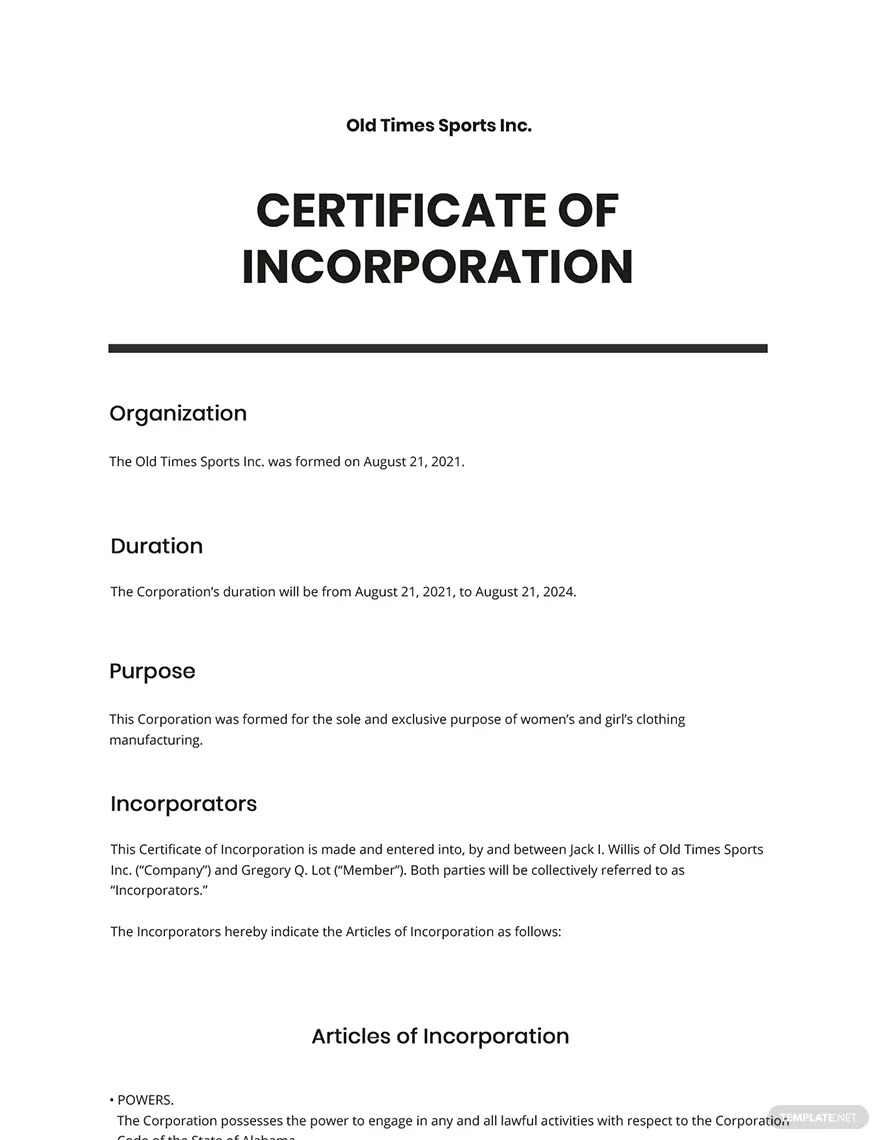
Organization Pre-Incorporation Agreement
Forming a company can be a long and tedious process. Businesses and corporations often need to go through a series of government processes and navigate all kinds of bureaucratic systems to get incorporated. Thus, it is important for the principal parties to have a pre-incorporation agreement in place first before finalizing the actual incorporation itself.

Organization Documents Uses, Purpose, and Importance
Any organization needs several key documents for it to be considered legitimate and lawful. The different documents each serve a specific purpose, depending also on the nature of the organization.
To Set Up a Company
Basic documents such as the articles of incorporation and company bylaws are required to set up a company. These documents serve as both a guide for the company and as evidence of the organization’s existence. In other words, you cannot properly form a company or start a business if you are unable to produce these documents.
Documentation and Record-Keeping
Any legitimate company or organization has a proper documentation process or system. Organizational forms and business documents are kept for all kinds of reasons, but particularly for compliance and information. These documents are traditionally printed but electronic versions are necessary for back-up and amendment purposes.
Guide for Management and Leadership
Formal organizational documents, like corporate bylaws, serve as an important guide for directors and management. The articles of incorporation identifies the principal parties and outlines the roles and responsibilities of each one. Much like a constitution, the documents basically help govern and direct the organization’s leadership.
Inform the Public
Organizational documents are not just for internal use, they are meant to inform the public as well. Anyone who does business with a company or corporation would certainly want reassurance that their transactions are credible and transparent. The documents offer proof of the legitimacy of the organization and can help prevent fraud and other potential problems.
Decision-Making Tool
If a company could be likened to a country or nation, then the organizational documents (e.g., corporate bylaws, etc.) would be considered its constitution. The constitution acts as a compass or guide that enables the organization to make informed decisions. Whether it is an office or classroom environment, every aspect of an institution is impacted by its governing laws.
What’s In An Organizational Document? Parts?
Company Name or Logo
The first page of any organizational document should contain the name of the company. If not the name, a clear company logo will do as well.
Title
Again, there are different organizational documents as there are different types of organizations. The title text should be bold, legible, and large enough to be read easily.
Date
Include the complete date (month, day, and year) the document was published. Whether it is the certificate of incorporation, corporate bylaws, or articles of incorporation, the date should follow the title.
Preamble
Having a brief introduction at the beginning of an organizational document is common practice. It is sometimes called a preamble, it basically provides an introductory or preliminary statement.
Parties
In formal agreements, like a pre-incorporation agreement, the principal parties are always introduced. It is important to assign each party a clear and definitive label (e.g., shareholder, company, etc.) to use throughout the document.
Terms and Conditions
The terms and conditions are outlined and specified in an organizational document. These may be arranged or classified into different sections with corresponding subheadings to properly distinguish each one.
How To Design An Organizational Document?
1. Choose an organizational document size
2. Determine the objective of creating the organizational document
3. Select an appropriate organizational document template
4. Provide a short preamble or introduction
5. Identify the organization’s principal parties
6. Enumerate the different terms and conditions that apply
Organization Vs. Company
An organization is any group or establishment comprised of members; it may be small, medium, or big depending on how many people belong to the organization.
On the other hand, company is a term best suited for businesses and profit-generating organizations; however, it may also refer to a performance arts group such as a dance company.
What’s the Difference Between an Organization, Management, and Project?
An organization is a body or group of people that share and work towards a common goal, mission, or objective.
Management is a discipline that involves the direction and supervision of people in the context of achieving or accomplishing a goal.
A project is an endeavor, venture, or task that is fulfilled by an individual or organization.
Organizational Document Sizes
Organizational documents come in standard sizes and do not have that much variety considering they are mainly legal documents. However, organizational document sizes can come in traditional print form or in electronic form.
- Letter Size (8.5 x 11 inches)
- Legal Size (8.5 x 14 inches)
- A4 Size (8.3 × 11.7 inches)
Organizational Document Ideas & Examples
As mentioned earlier, there are different types of organizational documents and each one has a specific objective. These organizational document ideas and concepts can give you a broad understanding of the various types of organizational documents and how to apply them.
- Organizational Document Ideas and Examples
- IT Company Organization Incorporation Guidelines Ideas and Examples
- Organization ID Card Ideas and Examples
- Organization Incorporation Agreement Ideas and Examples
- COVID-19 Organization Checklist Ideas and Examples
- Organization Marketing Plan Ideas and Examples
- Nonprofit Organization Articles of Incorporation Ideas and Examples
- Organization Key Results Area Ideas and Examples
- Organization Certificate of Incorporation Ideas and Examples
FAQs
What should an organization have?
In the most general sense, an organization should have structure, leadership, core values, vision, mission, and a professional environment.
What are organizational values?
They are an organization’s core values that guide and direct the organization or company towards achieving their objectives and goals.
What is organizational vision?
An organization’s vision is a statement that describes the objective of the company on what it hopes to achieve as an organization.
What makes a good organization?
A good organization has a clear vision and mission for the company and takes its core values seriously and applies them accordingly in every aspect of the business.
What are the characteristics of an organization?
An organization has several elements: structure, hierarchy, division of labor, shared goals or objectives, and continuity.
What is census report of organization?
A census report within the context of an organization is basically compiled data that covers employee demographics, population, and overall company size.
Why start an organization?
Starting an organization– whether private, public, or civic- is fulfilling in its own right and building relationships with other people who share your vision and goals can be very gratifying.
What are the forms of business organizations?
Business organizations can come in different forms such as sole proprietorship, partnership, corporation, or a Limited Liability Company (LLC).
What is the organization’s mission?
An organization’s mission statement describes the company’s overall purpose or reason for being and it usually accompanies and supports the organization’s vision statement.
What do you do in a nonprofit organization?
People who work in nonprofit or non-government organizations strive to advance a particular cause or advocacy that benefits the common good, versus working solely for profit.
What are the 3 major types of organization?
The three major types of organizational structures are functional, departmental, and matrix.
What is the most important part of an organization?
Human resources or the people working in the organization are the most important part of any organization or company.
What documents are required for an organization?
There are several documents needed to set up an organization including the articles of incorporation, corporate bylaws, shareholder’s agreement, director’s resolutions, and stock certificates.
What are two types of organizational documents?
The two types of organizational documents are certificates of incorporation and corporate bylaws.
Why is an organization the key to success?
When people work harmoniously together in an organization, a lot of work can be accomplished and a greater impact can be achieved versus an individual doing everything on their own without any organizational support whatsoever.

